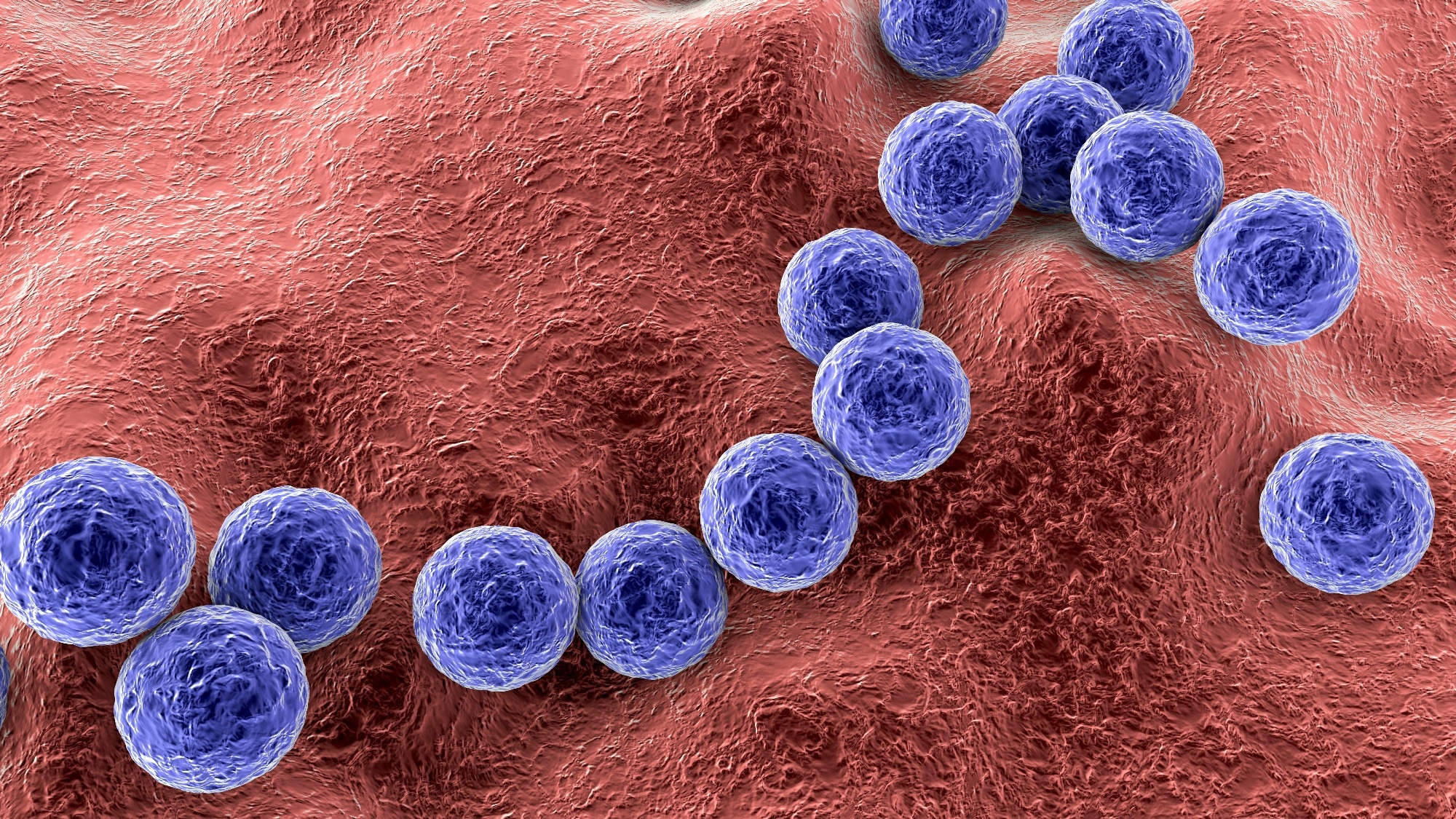 Study: Interplay between human STING genotype and bacterial NADase activity regulates inter-individual disease variability. Image Credit: Kateryna Kon/Shutterstock.com
Study: Interplay between human STING genotype and bacterial NADase activity regulates inter-individual disease variability. Image Credit: Kateryna Kon/Shutterstock.com
Background
All pathogenic microorganisms exhibit different degrees of virulence, and a single strain might also cause infections of varying severity in a host; thus, a combination of microbial pathogen and the host genotype may determine interindividual disease variability. Yet, the interactions of host and pathogen genotypes and their evolutionary trajectory remain elusive.
S. pyogenes bacteria causes severe infections, including necrotizing soft tissue infection (NSTI), an illness characterized by an excessive inflammatory response that could be life-threatening and whose cases have surged since the mid-1980s.
S. pyogenes evolves exclusively in humans, and the outcome of S. pyogenes infections varies considerably among patients; however, the reasons for this are unknown.
Researchers found a link between an S. pyogenes-caused epidemic and a horizontal gene transfer event that resulted in the acquisition of an allele-variant of a gene encoding an enzyme, nicotinamide adenine dinucleotide (NAD)-glycohydrolase (NADase) that controls the expression of the operon encoding the pore-forming toxin streptolysin O (SLO).
Studies in animal models have demonstrated NADase as a significant virulence factor. Within the host cells, it depletes NAD, which deprives cells of adenosine triphosphate (ATP), which, in turn, leads to cell death.
The toxic effects of NAD degradation might exacerbate inflammation and invasiveness in host cells; however, the NADase-NAD interaction alone cannot explain variable disease outcomes among patients with invasive S. pyogenes infections.
About the study
In the present study, researchers cultured S. pyogenes at 37 °C+5% carbon dioxide (CO2) in Todd-Hewitt broth with 0.2% yeast extract. They derived bone marrow cells from three different types of mice and cultured them in an R15 medium for seven days.
The team infected exponential-phase bacteria and macrophages with S. pyogenes. Four hours post-infection (pi), they isolated their RNA for the gene expression analysis via quantitative reverse transcription-polymerase chain reaction (RT-qPCR).
Further, they used the BL21 (DE3) strain of Escherichia coli to synthesize the NADase protein and its variant using isopropyl β-D-1-thiogalactopyranoside (IPTG) induction.
They assessed the enzymatic activity of NADase, and the ability of S.pyogene-secreted c-di-AMP to activate the STING pathway and induce a type I interferon (IFN) response, i.e., IFNβ production in host cells.
The team used blood samples of 73 S. pyogenes NSTI patients to extract their genomic DNA and perform PCR amplification and Sanger sequencing to identify STING1 polymorphisms affecting c-di-AMP binding.
Furthermore, they lysed macrophages for analysis of STAT1 activation by Western blot method. They also analyzed ATP content or lactate dehydrogenase (LDH) release from macrophages (or cell culture supernatants) collected at specific time points, which indicated the extent of cellular damage.
Results
The authors uncovered a novel function of enzymatically active bacterial NADase: it suppressed c-di-AMP-induced and STING-mediated type I IFN (IFNβ) production to increase the virulence of humans-infecting S. pyogenes strains.
STING-mediated type I IFNs confer protection against viral infections in infected and nearby cells by hindering viral replication.
On the contrary, the reduced c-di-AMP-binding capacity of bacterial strains expressing high NADase activity promoted poor disease outcomes.
Notably, S. pyogenes-derived c-di-AMP gained access to the host cell cytosol to activate STING to trigger a type I IFN response via SLO pore formation. Thus, SLO-deficient S. pyogene cells failed to induce IFNβ production. STAT1 phosphorylation also confirmed that SLO was mandatory in type I IFN receptor signaling induction.
Conclusions
To conclude, the ability of the bacterial strains to suppress STING-mediated type I IFN production was related to their ability to translocate an enzymatically active NADase. This high bacterial NADase activity manifested in poor outcomes of invasive S. pyogenes infection.
Future studies should investigate differences in STING allele frequencies in different populations to elucidate the observed non-uniform association between bacterial NADase and invasive S. pyogenes infections.
Furthermore, studies should explore the NADase-STING axis for its diagnostic utility and inform customized treatment strategies.